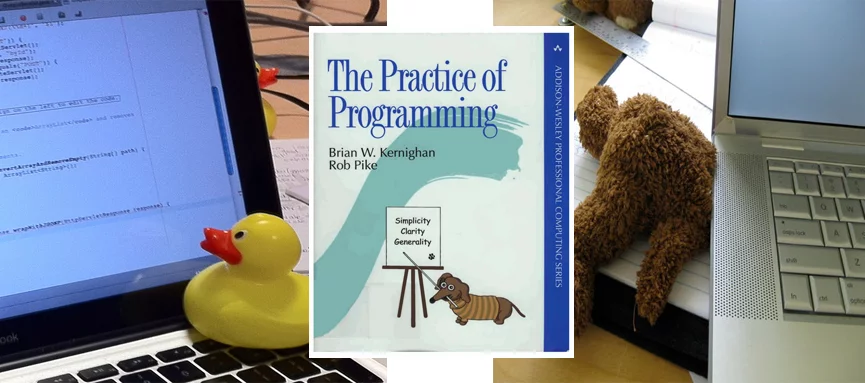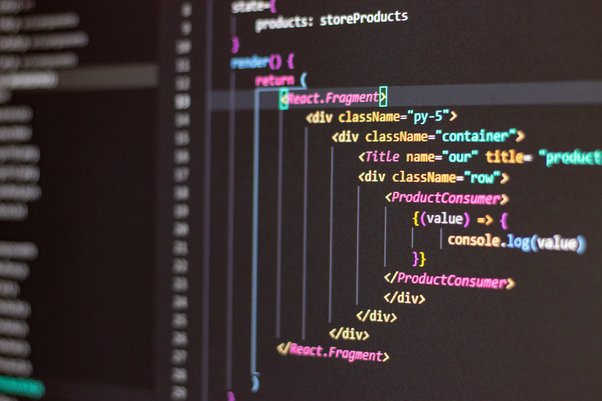Software development can be a confusing process that demands close attention to detail and respect for rules. The application programming interface (API) for your product should quickly define interactions and activities, and your code should make sense. Programming mistakes that compromise security can occur if these guidelines are not followed. Regardless of your degree of experience, success in software development depends on minimizing errors.
All programmers encounter issues when writing code at some point. And no matter how well thought out and creative the software engineering used was, there always seems to be a bug. The chosen language may occasionally be at fault, as may the algorithms’ behavior, or distractions may occasionally be at fault.
No programmer can produce error-free code, for any reason. And frequently spend more time on problems than on the actual project. But by designing clean code and producing dependable and stable software, proper programming practises can help to minimize this issue.
The following advice will assist you in avoiding coding errors:
1. Review Your Code Well
It helps to review your code throughout the software development process consistently. Gone are the days when this process had to be manual. However, thanks to massive technological advancements, robotic process automation (RPA) can be resourceful in pointing out possible programming errors. The best RPA services provider can guarantee seamless code review and catch the mistakes you’ve made.
Besides, RPA services benefit you long-term, boosting your profitability, seizing opportunities with digital transformation, and amplifying your earning potential. Below are the steps to take when manually reviewing code:
- Understand the requirements and set early expectations: Every code performs a distinct action, and it’s best to understand what the code you’re creating can do. Try setting short-term and early expectations before you start to generate code for a clear roadmap of what you’re aiming to achieve.
- Identify typical coding mistakes: You should aim at working with a team than alone during the initial code development stages. Have authors read through the code to point out the mistakes you might make to avoid errors and bugs toward the end of your software development phase.
- Check for readability: A telltale sign that your code will be less prone to errors is when it’s readable in the initial developments. An unreadable code is usually challenging to follow and understand what it does, and you can rectify that by ensuring that every variable name is descriptive.
- Examine each line of code: Lines of code need to communicate action and make proper sense. Reading every line should help you point out those that don’t execute meaningful action. You can remove them as early as you begin coding.
Software development can be tedious and overly consuming. Therefore, please try catching 20-minute breathers between sessions to avoid overwhelming yourself when reviewing code. Moreover, ensure that you adequately plan by breaking down the entire process into actionable steps.
2. Utilize Version Control Tools
As your software development process progresses, it’s best to ensure that you track the evolution and manage changes to the codebase over time, which version control tools can help with. Doing that helps prevent errors by allowing you to compare various versions of the code you’re writing and point out any changes that might cause an error. Moreover, numerous developers can share similar version control tools, so it’s easier to identify software errors through collaboration.
A good version control tool should be centralized to facilitate collaboration. It’d be better if it could support branching and merging to enable you to work on various fixes without interfering with other developers’ work. Developing complex software distribution models like Software-as-a-service (SaaS) doesn’t need outside interference.
Any twitch from an unaware developer can cause potentially irritating bugs. More importantly, the version control tool you use should also incorporate vision tracking to map changes that cause errors and have robust access control to restrict your codebase’s access to authorized users.
3. Modularization
An important code misplaced in software can be a headache to fix bugs. When the code is easy to understand it is simple to run and can find errors quickly.
The best way to ensure ease of understanding of codes is to write functions that only do one thing. Create modules for functions and procedures that are important for your software, so the isolation of a particular point of the program is facilitated and bug fixes can be done faster and in an efficient way.
Creating software components that do only one thing is called modularization of code. This type of program helps to understand software systems more easily. The modularization creates one level of abstraction that simplifies the understanding of a particular program block without having to understand the system as a whole in detail.
4. Automated Test
Unit testing and other types of automated tests can be easily performed when using modularization. You can run and check a piece of code with entries and specific data to see if the result of the program coincides with what is expected.
Read Also: How You Can Memorize Code Syntax Efficiently?
It is much simpler and faster to check the functionality of a function or class method than functional tests that verify the general behavior of a program. There are many tools to make it easier to run tests on your programs.
One is Inflectra which simplifies testing processes. Another example is the standard Python library that includes a Python version of JUnit called “PyUnit” or simply unit test (unit testing framework).
5. Use Static Code Analysis Tools
Static code analysis tools help detect errors and improve code consistency. Moreover, they also point out performance bottlenecks that might be lurking in your code, prompting performance optimization. Unused variables and dead codes can also be a potential source of error, declared but unused codes or codes with no semantic meaning. Such codes make it more challenging to skim code. Static code analysis tools can help you identify all these sources of error early in your software development process.
6. Method Teddy Bear
There is a legend that Brian Kernighan and Rob Pike originated in a computer college – Teddy Bear, also known as Rubber Duck. Students were required to sit in front of a teddy bear and explain the errors to him before looking for a teacher or someone “alive”. Believe it or not, this purification technique is so effective and is spread throughout the software engineering world and is still used today.
The important part about this method is to explain the code and problem aloud, simply and clearly. Causing the speaker himself has an “outside” view of the problem and in most cases find the solution themselves.
Some programmers exchange the teddy bear for a “rubber duck”. A similar and useful technique is to keep a daily schedule where the impressions of the code are recorded before and after implementation.

Practical advice and real examples in C, C ++, Java, and other languages, ‘The Practice of Programming’ shows that developers should evaluate options, choose between design alternatives, debug, test, improve performance, and upgrade the writing software for them and by others.
7. Leverage Coding Standards
Coding standards are ideal practices in coding for more valid reasons. They guide developers through creating high-end, maintainable, and readable code with ease. After developing your software, they can eliminate potential errors that might be immitigable bugs. Make code more readable by maintaining consistency, which can guarantee coding efficiency. Moreover, they provide a framework for creating high-quality codes without errors, making them easier to debug and update over time.
8. Communicate Coding Requirements
Every code has specific requirements, and if you’re working with a team, it’s best that the requirements are precise and the instructions are executable. The code should be readable, understandable, and modifiable. It should also adhere to established coding standards and follow consistent naming conventions and formatting. The code should also have high scalability to accommodate future changes and growth and have flexible built-in features that support new requirements in the future.
9. Remember To Test Early
Early testing should be mandatory through initial coding development to identify errors that can develop into bugs. It’s much better to go back a few steps to fix a coding error than to do it in later stages when making major tests before deployment. Debugging can take a long time and be expensive if your programming and software development are large-scale. It disrupts your timelines and takes you back to the starting line while you may be deploying and using the developed software.
When reviewing code in initial software development phases, it’s best to ensure that you plan for testing and define the test cases, including those that cover major features and software functionalities, as well as scenarios that may cause potential issues. Moreover, the testing should be ongoing throughout your software development journey, including design and implementation.
What Are The Common Types of Error in Coding?
Programming mistakes of all shapes and sizes are frequently encountered during the development process. The greatest programmers get accustomed to navigating the faults they produce and addressing them fast.
The five most typical forms of programming errors are discussed below, along with tips on how to prevent them.
1. Syntax Errors
Just like human languages, computer languages have grammar rules. But while humans are able to communicate with less-than-perfect grammar, computers can’t ignore mistakes, i.e. syntax errors.
For example, let’s say the correct syntax for printing something is print('hello'), and we accidentally forget one of the parentheses while coding. A syntax error will happen, and this will stop the program from running.
As your proficiency with programming language increases, you will make syntax errors less frequently. The easiest way to prevent them from causing you problems is to be aware of them early. Many text editors or IDEs will come with the ability to warn you about syntax errors at the time of writing.
2. Logic Errors
Logic errors can be the hardest to track down. Everything looks like it is working; you have just programmed the computer to do the wrong thing. Technically the program is correct, but the results won’t be what you expected. If you didn’t check the requirements beforehand and wrote code to return the oldest user in your system when you needed the newest, you would have a logic error.
A famous example happened in 1999 when NASA lost a spacecraft due to miscalculations between English and American units. The software was coded one way but needed to work another.
When writing your tests, show them to the product manager or product owner to confirm that the logic you’re about to write is correct. In the example above, someone closer to the business would have spotted that you aren’t mentioning the fact it is the newest user that is required.
3. Compilation Errors
Some programming languages require a compilation step. Compilation is where your high-level language converts into a lower-level language that the computer can understand better. A compilation or compile-time error happens when the compiler doesn’t know how to turn your code into the lower-level code.
In our syntax error example, if we were compiling print('hello', the compiler would stop and tell us it doesn’t know how to convert this into a lower-level language because it expected a ) after the '. If there is a compile-time error in your software, you won’t be able to get it tested or launched.
Like syntax errors, you will get better at avoiding these with time, but in general, the best thing you can do is get early feedback when it happens.
Compilation happens across all files of your project at the same time. If you’ve made lots of changes and see lots of compiler warnings or errors, it can be very daunting. By running the compiler often, you will get the feedback you need sooner, and you will more easily know where to address the issues.
4. Runtime Errors
Runtime errors happen as a user is executing your program. The code might work correctly on your machine, but on the webserver, there might be a different configuration, or it might be interacted with in a way that could cause a runtime error.
If your system took the input from a form and tried to capitalize the first letter of a name by doing something like params[:first_name].capitalize, this would break if the form was sent without a first name.
Runtime errors are particularly annoying because they directly impact your end user. A lot of these other errors will happen when you’re at your computer working on the code. These errors occur when the system is running and can stop someone from doing what they need to do.
Make sure you have good error reporting in place to capture any runtime errors and automatically open up new bugs in your ticketing system. Try and learn from each bug report so that in the future you can guard against this type of error.
Making use of frameworks and community-maintained code is an excellent way of minimizing these types of errors because the code is in many different projects, so it will have already encountered and fixed many issues.
5. Arithmetic Errors
An arithmetic error is a type of logic error that involves mathematics. A typical example when performing a division equation is that you cannot divide by zero without causing an issue. Very few people would write 5 / 0, but you might not think that the size of something in your system might sometimes be zero, which would lead to this type of error.
ages.max / ages.min could return an error if either ages.max or ages.min were zero.
Arithmetic errors can generate logic errors as we’ve discussed, or even run-time errors in the case of divide by zero.
Having functional tests that always include edge-cases like zero, or negative numbers is an excellent way to stop these arithmetic errors in their tracks.
Final Words
Software development can take a while, which increases developers’ risk of error. Therefore, it is essential to continuously divide the entire development process into manageable steps that reduce these mistakes, particularly while working alone. Although the procedure requires patience and commitment, it is far more gratifying when there are no problems or defects left after deployment.
This post should be helpful because fixing these mistakes isn’t as difficult as you would think. Try, if you can, to make studying software development a continuous process so you can become familiar with the full programming environment. That ought to assist you avoid mistakes in your subsequent actions.


